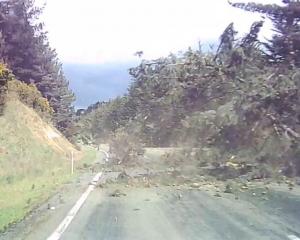
But yesterday’s "corn blood moon" over Otago and Southland was seen for what it was - a spectacular sight.
Dunedin astronomer and Tūhura Otago Museum director Dr Ian Griffin watched the phenomenon from Middlemarch yesterday morning.
"I'm not a particularly religious or superstitious-type person.
"But from a scientific perspective, it was lovely - in particular because of the unique circumstances of this eclipse, where the total phase began just as dawn was breaking.
"So the sky was starting to get light and the moon was sinking over the mountains in the west.
"It was really special."
It is called a "corn" moon because it corresponds with the time of year in late summer-early autumn, when corn harvesting traditionally takes place in the northern United States, according to the Old Farmer's Almanac.
Dr Griffin said the red hue of the moon came from light shining through Earth’s atmosphere.
"As the Earth passes between the sun and the moon, it cuts off the direct light from the sun to the moon.
"So the only light that gets to the moon is light refracted through the Earth's atmosphere, and that's basically all the sunrises and sunsets at the same time."
He said the moon also had patches of blue and purple on it during the eclipse, which was caused by sunlight shining through Earth’s ozone layer.
While it was visible at times during yesterday’s eclipse in Otago, it was more prominent in other parts of the world where the moon sat higher in the sky, he said.
Yesterday’s total lunar eclipse was the second of three within a period of less than 12 months.
The first was on March 13-14, when totality lasted for just over an hour, and the third will be on March 2-3 next year, when totality will last for 58 minutes.
Dr Griffin said astronomy fans had more to look forward to before the end of this month.
There would be a partial solar eclipse between 5.41am and 8.36am on September 22.
"That will be a special eclipse too because it will happen at sunrise, and the sun will rise over the ocean with a chunk bitten out of it."
He reminded people not to look directly at a solar eclipse.
"You need to have special glasses because the sun is really bright and you can damage your eyesight.
"But it will be very exciting to watch," he said.












